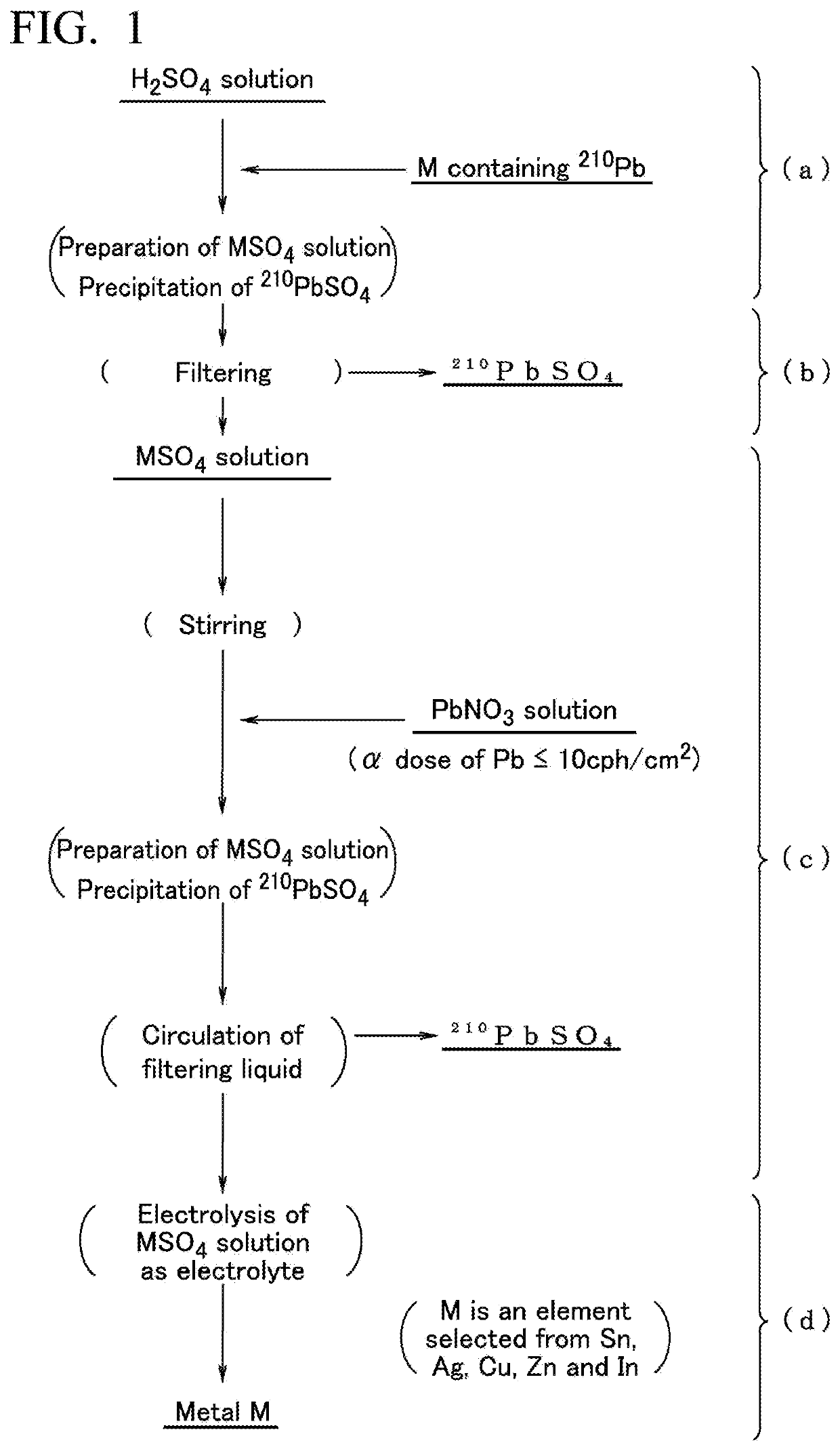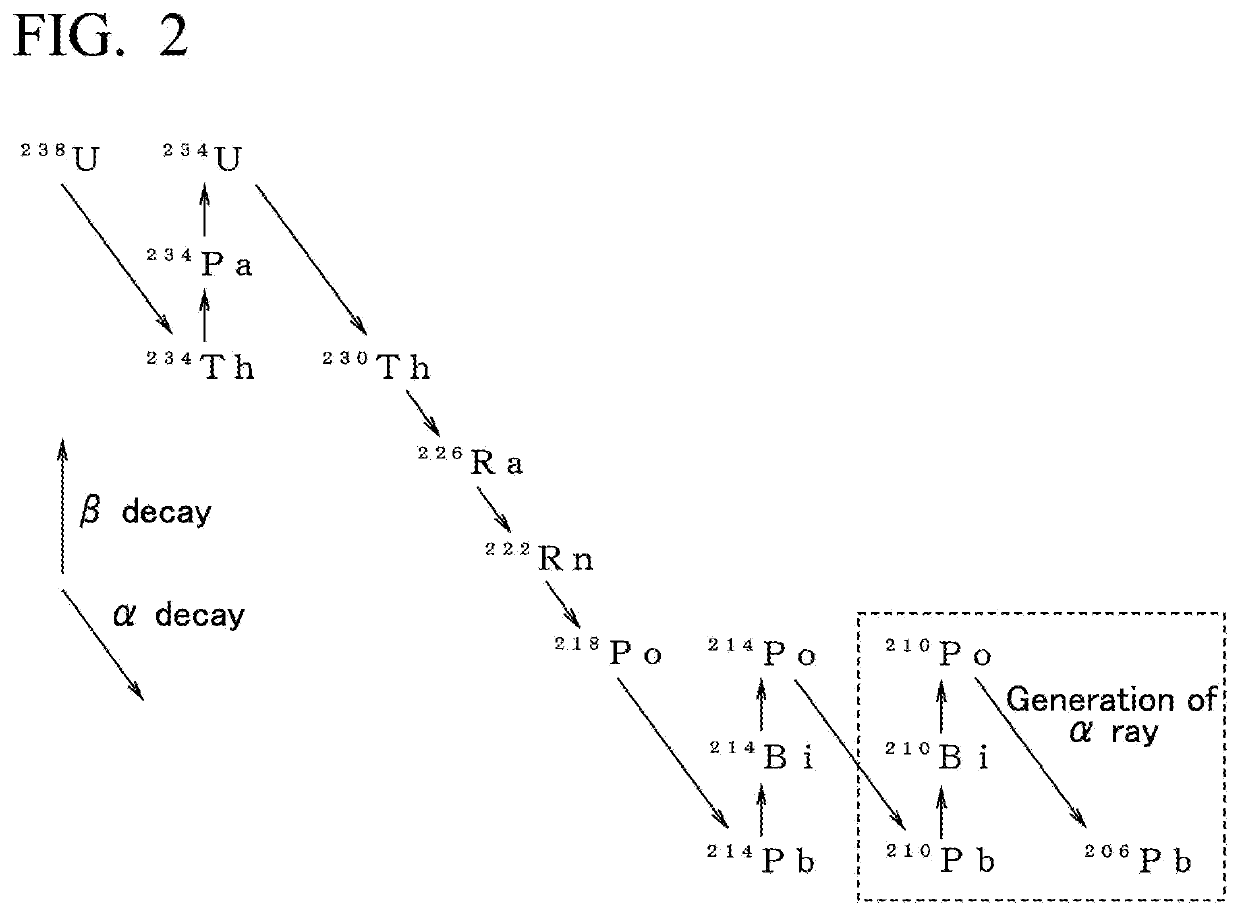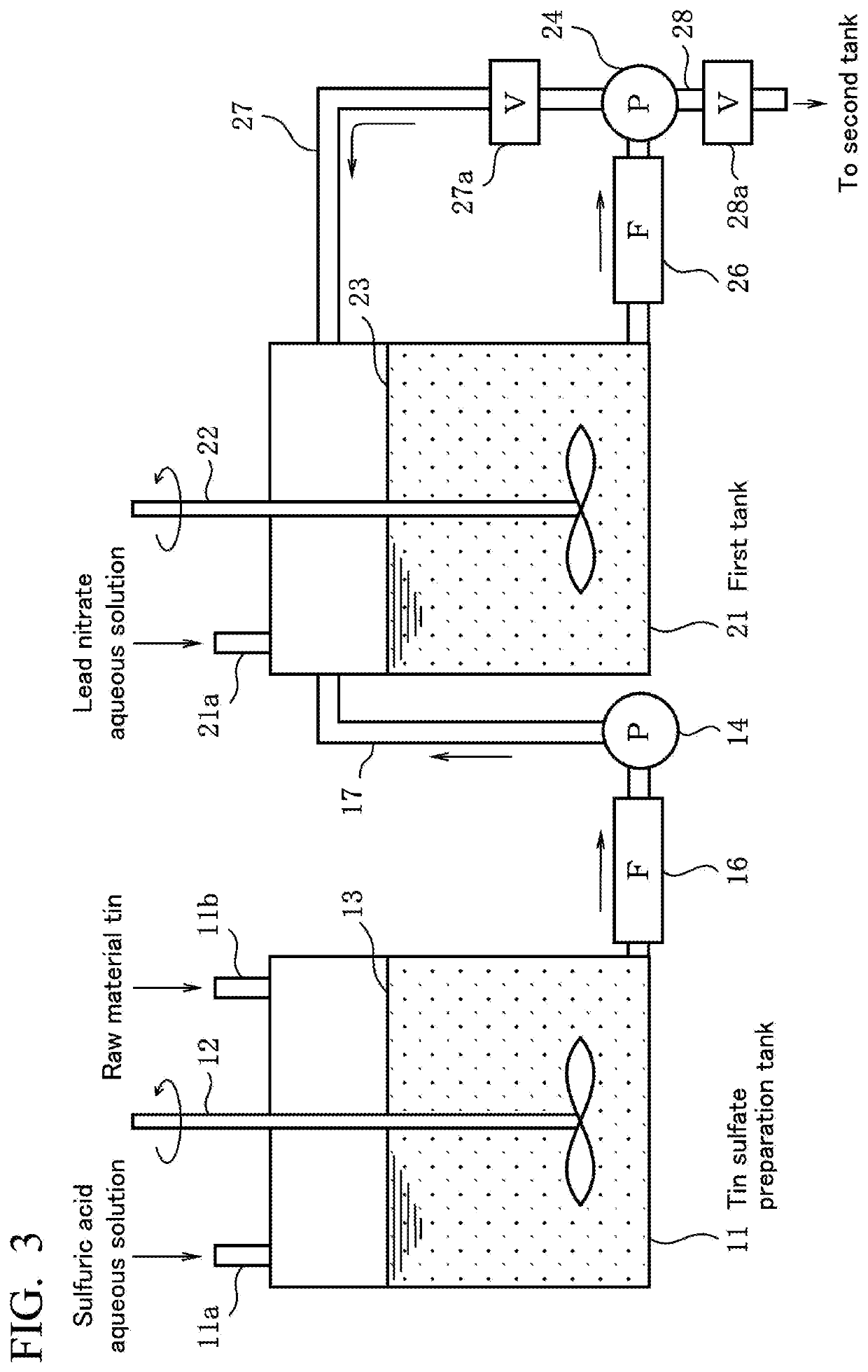METAL AND TIN ALLOY HAVING LOW alpha-RAY EMISSION, AND METHOD FOR PRODUCING SAME
- Summary
- Abstract
- Description
- Claims
- Application Information
AI Technical Summary
Benefits of technology
Problems solved by technology
Method used
Image
Examples
first embodiment
[0055]First, a method for producing any metal having a low α-ray emission of tin, silver, copper, zinc, and indium (metallic material for a solder material) of a first embodiment of the present invention will be described in an order of steps shown in FIG. 1 or on the basis of a production apparatus shown in FIG. 3.
Step (a) and Step (b)
Metallic Raw Material
[0056]Regarding a metallic raw material for obtaining any metal having a low α-ray emission of tin, silver, copper, zinc, and indium (represented by M in FIG. 1) of the first embodiment, the selection of the metallic raw material is not restricted by the degree of the content of Pb as an impurity or the α-ray emission.
[0057]For example, even when a metal such as commercially available tin including Pb at a concentration of approximately 320 mass-ppm and an α-ray emission by Pb being approximately 9 cph / cm2 is used as the metallic raw material, in the metal that is obtained in the end using a production method and a production appa...
second embodiment
[0081]Next, a method for producing a tin alloy having a low α-ray emission of a second embodiment of the present invention will be described.
[0082]In this production method, a tin alloy is produced by casting metallic tin (Sn) having a low α-ray emission obtained in the first embodiment and one or more kinds of metals selected from a group consisting of silver, copper, zinc, indium, bismuth, nickel, and germanium.
[0083]Here, as the metal that forms an alloy with the metallic tin, in the case of using the tin alloy as a solder, silver, copper, zinc, and indium are preferred from the viewpoint of the dissolving point and mechanical characteristics of the solder. In order to attain the object of the present invention, the α-ray emission of silver, copper, zinc, indium, bismuth, or nickel that forms an alloy with the metallic tin is 0.002 cph / cm2 or less.
[0084]In the present embodiment, for the casting, it is possible to use a furnace that is generally used for casting, for example, a h...
example 1
[0087]As a metallic raw material, commercially available Sn powder having an α-ray emission of 10.2 cph / cm2 and a concentration of Pb being 15 ppm was used, and this metallic raw material was added to and mixed with a sulfuric acid aqueous solution having a concentration of 130 g / L stored in a tin sulfate preparation tank and dissolved at 50° C., thereby preparing 200 g / L of a tin sulfate aqueous solution 1 m3. Therefore, Pb contained in the tin that was the metallic raw material was precipitated in a form of lead sulfate. The tin sulfate aqueous solution was filtered by being passed through a membrane filter (pore diameter: 0.2 μm) manufactured by Yuasa Membrane Systems Co., Ltd., thereby removing lead sulfate.
[0088]Next, in a first tank, while stirring the tin sulfate aqueous solution from which lead sulfate has been removed at a rotation rate of 100 rpm, a lead nitrate aqueous solution (the concentration of lead nitrate: 20% by mass) including Pb having an α-ray emission of 5 cph...
PUM
| Property | Measurement | Unit |
|---|---|---|
| Temperature | aaaaa | aaaaa |
| Temperature | aaaaa | aaaaa |
| Time | aaaaa | aaaaa |
Abstract
Description
Claims
Application Information
 Login to View More
Login to View More - R&D
- Intellectual Property
- Life Sciences
- Materials
- Tech Scout
- Unparalleled Data Quality
- Higher Quality Content
- 60% Fewer Hallucinations
Browse by: Latest US Patents, China's latest patents, Technical Efficacy Thesaurus, Application Domain, Technology Topic, Popular Technical Reports.
© 2025 PatSnap. All rights reserved.Legal|Privacy policy|Modern Slavery Act Transparency Statement|Sitemap|About US| Contact US: help@patsnap.com



